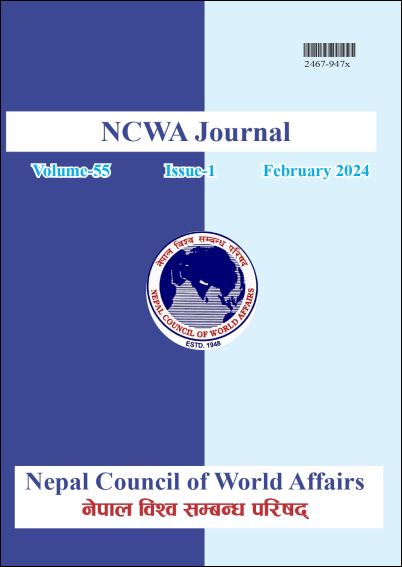History of Yemen’s Crisis and its Global Implications
DOI:
https://doi.org/10.3126/ncwaj.v55i01.62960Keywords:
Bab-el Mandab Strait, Yemen, Houthis, Zaydi, Red SeaAbstract
Yemen’s story, from becoming one country in 1990 to the rise of the Houthi rebels and how they affect global trade, is full of changes. First, when North and South Yemen joined in 1990, people hoped for stability and progress. But inside Yemen, there were fights, tribal issues, and struggles to modernize. The fights for power and bad governance made things worse. Then came the Houthi movement. It started because some Shia Muslims in Yemen felt left out politically and economically. Originally just a religious group, it became a strong political and fighting force. Iran helped them, and they took over important sea routes like the Bab el Mandeb strait. The world’s response to the Houthi blockades shows how tricky Yemen’s situation is. Countries tried diplomacy, asked for breaks in fighting, and secretly tried to influence things. Big countries like the United States, China, Iran, and Russia got involved too, making things even more complicated. With sea routes disrupted, shipping costs go up, and it takes longer for goods to reach their destination thus affecting global politics, trade and business. In short, Yemen’s story from unification to the Houthi rebels shows how history, politics, and money all mix together. Yemen’s problems show that the world needs to work together to fix things and bring peace, happiness, and cooperation to everyone.




